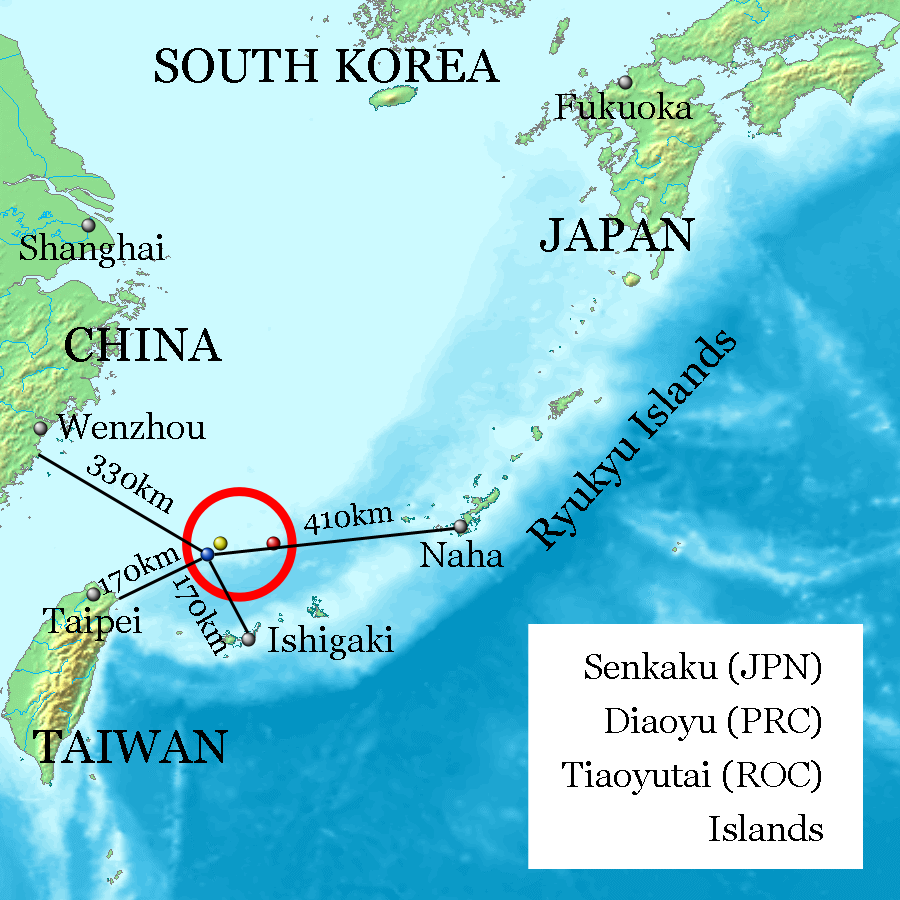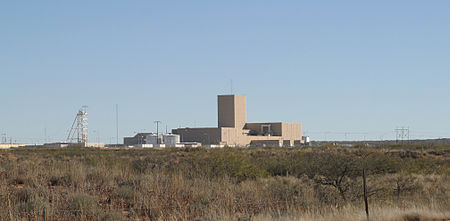
Blog
-
Geiger Readings for February 27, 2014
Ambient office = 120 nanosieverts per hourAmbient outside = 83 nanosieverts per hourSoil exposed to rain water = 86 nanosieverts per hourBartlett pear from Top Foods = 91 nanosieverts per hourTap water = 108 nanosieverts per hourFiltered water = 96 nanosieverts per hour -
Nuclear Accidents 25 – Accident at Nuclear Waste Repository in New Mexico 2
I recently put up a blog post about the accidental release of radiation at the at the Waste Isolation Pilot Plant (WIPP) near Carlsbad, New Mexico. The cause of the radiation release is still under investigation. The repository is a half-mile underground in a ancient deposit of salt and has been in use for fifteen years for the permanent storage of plutonium-contaminated waste generated by the U.S. nuclear weapons program. A couple of weeks ago there was a “radiation event” which was signaled by the detection of radiation in the air filtration system at the repository. Thirteen workers were potentially exposed to radiation from the waste and radioactive materials were detected up to more than a mile away from the repository.
The WIPP has been temporarily shut down while the investigation continues. WIPP has been taking contaminated waste such as tools, gloves, glasses and protective suits from nuclear labs in Idaho, South Carolina and New Mexico. Disposal of such waste is a serious problem for the U.S. nuclear weapons program. The Los Alamos nuclear laboratory has been ordered to remove almost four thousand barrels of such waste from its site before the end of June. Some of this waste was dug up from unsealed dumps around the site. The barrels containing the waste are stored outside in an unprotected area and they were threatened by wildfires recently. Shipments of these wastes to the WIPP have been halted and the clock is ticking.
There have been calls for the WIPP facility to be shut down permanently but the local and national authorities have assured the public that there has been no threat to public health or the environment. While they admit that there is a problem that needs to be dealt with, they confident that the cause of the “radiation event” will be found and that the safety systems currently in place at WIPP are sufficient to prevent any significant and dangerous release of radioactive materials. Unfortunately, the investigators have not been able to reenter the repository immediately because of the levels of radiation that have been detected.
There has been a push in the recent past to actually expand the WIPP repository to be able to deal with more radioactive waste. The recent “radiation event” has already been seized upon by critics of the WIPP as proof that a culture of complacency has developed at the WIPP and the operators and supports have been overconfident about the safety of the site. This claim has been strenuously rejected by the operators of the site.
Here in Washington State at the Hanford Nuclear Reservation, the U.S. Department of Energy has been struggling with the disposal of waste from decades of nuclear weapons development. Tanks of dangerous waste are leaking into the ground and construction of a vitification plant that was suppose to trap the waste in glass logs and facilitate permanent disposal has been halted because of design problems. The situation at the WIPP is not just a local problem for the people in the area. It is a national problem that must be solved as efforts to dispose of these nuclear wastes proceed.
-
Geiger Readings for February 26, 2014
Ambient office = 168 nanosieverts per hourAmbient outside = 46nanosieverts per hourSoil exposed to rain water = 44 nanosieverts per hourRed onion from Top Foods = 89 nanosieverts per hourTap water = 102 nanosieverts per hourFiltered water = 96 nanosieverts per hour -
Nuclear Weapons 65 – China Claims that Japan is Developing Nuclear Weapons
I have blogged about Japan and nuclear weapons in the past. Japan is the only country on Earth to have suffered nuclear attacks. The dropping of the atomic bombs on Hiroshima and Nagasaki on Japan helped to bring World War II to an end in the Pacific. The post-World War II Japanese Constitution forbids the development of nuclear weapons by Japan. There are factions in Japan who would like to see that prohibition struck from the Constitution. The Major General of the Japanese Self-Defense Force has called for altering Japan’s policy on nuclear weapons. The new Prime Minister of Japan has stated that Japan would “revise its pacifist constitution, which limits its military activities to self-defense.”
Several small islands north of Taiwan, referred to collectively as the Senkaku Islands, were controlled by the Japanese from 1895 until 1945. Following the end of World War II in the Pacific and the surrender of Japan, the United States administered the uninhabited islands from 1945 to 1972 when they returned control of the islands to Japan. China argues that the islands were seized by the Japanese and should have been returned to Chinese control as many conquests of Imperial Japan were returned to other nations in 1945. These islands are included in a defense treaty between Japan and the U.S. If they are seized by another country, the U.S. would be bound by the treaty to intervene on Japan’s behalf.
In November of 2013, China announced the East China Sea Air Defense Identification Zone which included the Senkaku islands. China said that any aircraft flying over the islands would have to file a flight plan and submit information about transponders on the aircraft. Japan and the U.S. objected strongly to the Chinese announcement and said that they would not honor China’s demands.
Asia Weekly, a Hong Kong-based newspaper has recently reported that the Japanese are secretly developing a nuclear weapons capability because of the increasing tensions between China and Japan with respect to the Senkaku Islands in the East China Sea. The Chinese are especially upset about Japan’s reluctance to return a third of a ton of weapons-grade plutonium to the United States. The plutonium was given to Japan for research purposes in the 1960s. However, this is a tiny amount compared to the forty tons of plutonium that Japan possesses.
Japan is heavily invested in nuclear technology and hopes to revitalize its economy by exporting nuclear reactors to other countries. The Asia Weekly claims that Mitsubishi, Hitachi and Toshiba along with two hundred smaller member of the Japanese nuclear industry possess all the expertise necessary to rapidly develop nuclear weapons if called upon by the Japanese government.
China has been increasingly belligerent in public pronouncements lately. They said that they could easily destroy the U.S. fleet in the Pacific. They published maps of the U.S. cities that they said they could destroy in a nuclear strike. They sunk a fake U.S. carrier with a new type of missile and bragged about it. Whatever the Japanese interest in developing nuclear weapons, China’s recent provocative statements give the Japanese every reason to be concerned about possible future conflicts with China. If the Japanese do develop nuclear weapons, the Chinese will be a large part of the reason.
-
Radiation News Roundup February 25, 2014
Japanese Government says that safety systems failed at Fukushima. enenews.com
The White House has approved a civilian nuclear pact with Vietnam. nuclearstreet.com
Idaho politicians working to loosen gun laws on college campuses have run into an unexpected roadblock: The Nuclear Regulatory Commission. nuclearstreet.com
-
Geiger Readings for February 25, 2014
Ambient office = 131 nanosieverts per hourAmbient outside = 114 nanosieverts per hourSoil exposed to rain water = 74 nanosieverts per hourLemon from Top Foods = 70 nanosieverts per hourTap water = 149 nanosieverts per hourFiltered water = 130 nanosieverts per hour -
Nuclear Accidents 24 – Accident at Nuclear Waste Repository in New Mexico 1
I have been blogging lately about illegal dumping of radioactive materials around the world. I am going to change topics for today’s blog. Recently there has been a series of reports about a fire and a “radiation event” at the Waste Isolation Pilot Plant (WIPP) near Carlsbad, New Mexico. This facility is a deep geological repository for waste generated by the manufacture of nuclear weapons for the United States military and is the only transuranic repository in the U.S.
Around February 7th, a truck carrying salt inside the repository caught fire. All the personnel were evacuated from the facility at that time. The U.S. Department of Energy sent in a team to investigate the fire. While they were there, a “radiation event” took place. I don’t know whether the fire was connected with the “event” but I find the timing interesting.
On February 14th, the “radiation event” occurred. It is still not clear exactly what caused this “event.” There are indications that radioactive processes generated hydrogen, methane, and/or or volatile organic compounds which then exploded. A air monitoring device registered airborne radiation late on the 14th. The next day, the ventilation system was switched to a filtration mode which reduced the possibility of releases of radioactive materials. In filtration mode, the ventilation system removes at least ninety nine and ninety seven hundredth of airborne contaminants.
On February 18th, plutonium was detected about one half mile from the repository indicating that there must have been a release of some radioactive materials into the environment. Radioactive materials were also detected by a monitor that was over a mile and a half from the repository. Included in the release were small amounts of plutonium and americium which are very toxic radioactive isotopes. Air monitors eleven miles from the repository have not registered any radioactivity.
Authorities have been downplaying the “event.” They have reassured the public that there is absolutely no danger from the radioactive release. Information has been lacking on exactly where the wind may have blown the radioactive materials. The Carlsbad Environmental Monitoring and Research Center (CEMRC) stated that the plutonium and americium are heavy and the wind would not carry them far from repository. However, the CEMRC is offering free testing for anyone within a hundred miles of the repository.
The materials in the repository are highly radioactive and the authorities are going to wait for at least a month before sending people in to investigate the causes of the “event.” They have scheduled a public meeting to answer people’s concerns about the “event.” There are still a number of important questions that have not been answered. They do not know what caused the release. They don’t know exactly what caused the radioactive materials to travel over a mile and a half from the repository. They do not know exactly what quantities of which radionuclides were released. They do not know where all the radionuclides that were not trapped by the filters wound up.
The WIPP is an important repository for the long term storage of plutonium contaminated wastes from nuclear weapons production. If WIPP is shut down for a long period while the “event” is researched, it may cause a problem with the disposal of transuranic wastes and the production of nuclear weapons in the U.S.
Waste Isolation Pilot Plant near Carlsbad, New Mexico:
-
Radiation News Roundup February 24, 2014
-
Geiger Readings for February 24, 2014
Ambient office = 75 nanosieverts per hourAmbient outside = 124 nanosieverts per hourSoil exposed to rain water = 123 nanosieverts per hourHass avacado from Top Foods = 117 nanosieverts per hourTap water = 100 nanosieverts per hourFiltered water = 82 nanosieverts per hour






